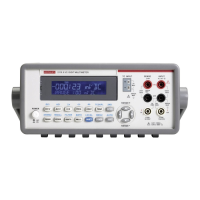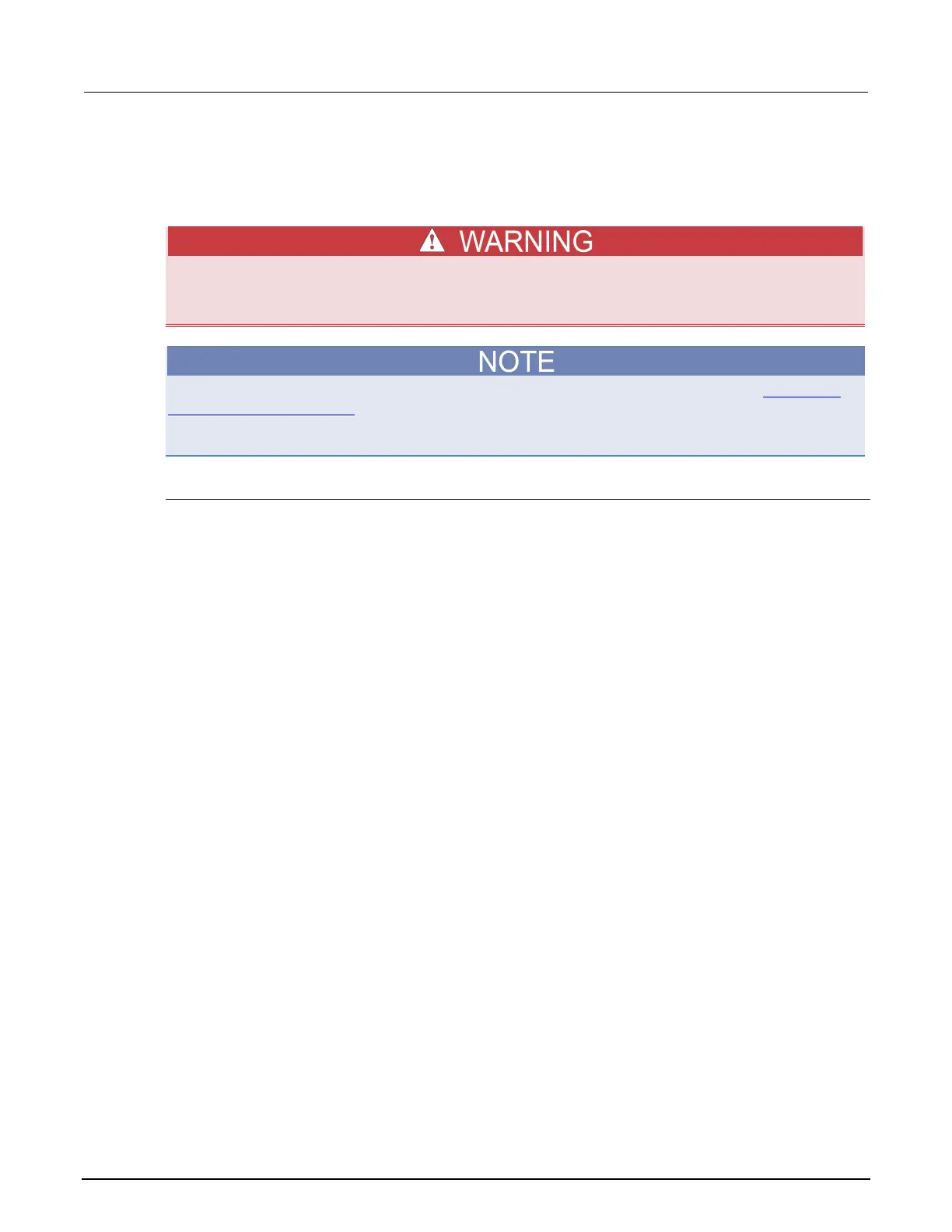3: Basic DMM operation Model 2110 5½ Digit Multimeter
3-12 2110-901-01 Rev. C/August 2013
Frequency and period measurements
The instrument measures frequency from 3 Hz to 300 kHz (or periods from 333 ms to 3.33 µs) using
the AC voltage ranges (100 mV to 750 V) or AC current ranges (1 A, 3 A, or 10 A).
Do not apply more than 1000 V (peak; measurement CAT II at maximum 600 V) to the
instrument. Applying higher voltage is an electric shock hazard and could result in personal
injury or death. It may also damage the instrument.
Use the following procedure and commands to perform basic measurements. Refer to Enhancing
measurement performance (on page 3-37) for details about setting measurement speed and
resolution. It also provides information on using other features and settings to optimize measurement
performance.
Front-panel operation
Perform the following steps to measure frequency or period:
1. Select the frequency or period measurement function:
• Frequency: Press the FREQ key.
• Period: Press FREQ and CONFIG, and with PERIOD displayed, press ENTER.
2. Select the AC signal (voltage or current) to measure:
a. Press CONFIG, use the ► key to display INPUT JACK, and then press ENTER.
b. Use the ◄ or ► key to display VOLTAGE or CURRENT, and then press ENTER.
3. Select a measurement range (auto or manual) for the AC signal to be measured.
• Autorange is the power-on default. If manual ranging is selected (MAN indicator on), press the SHIFT
key and then ESC (AUTO) to select autorange.
• For manual ranging, press the RANGE ▲ and ▼ keys to select a measurement range.
4. As shown below, connect the AC signal to the Model 2110 and observe the reading on the
display. If the input signal exceeds the selected range, the overflow message OVLD is displayed.

